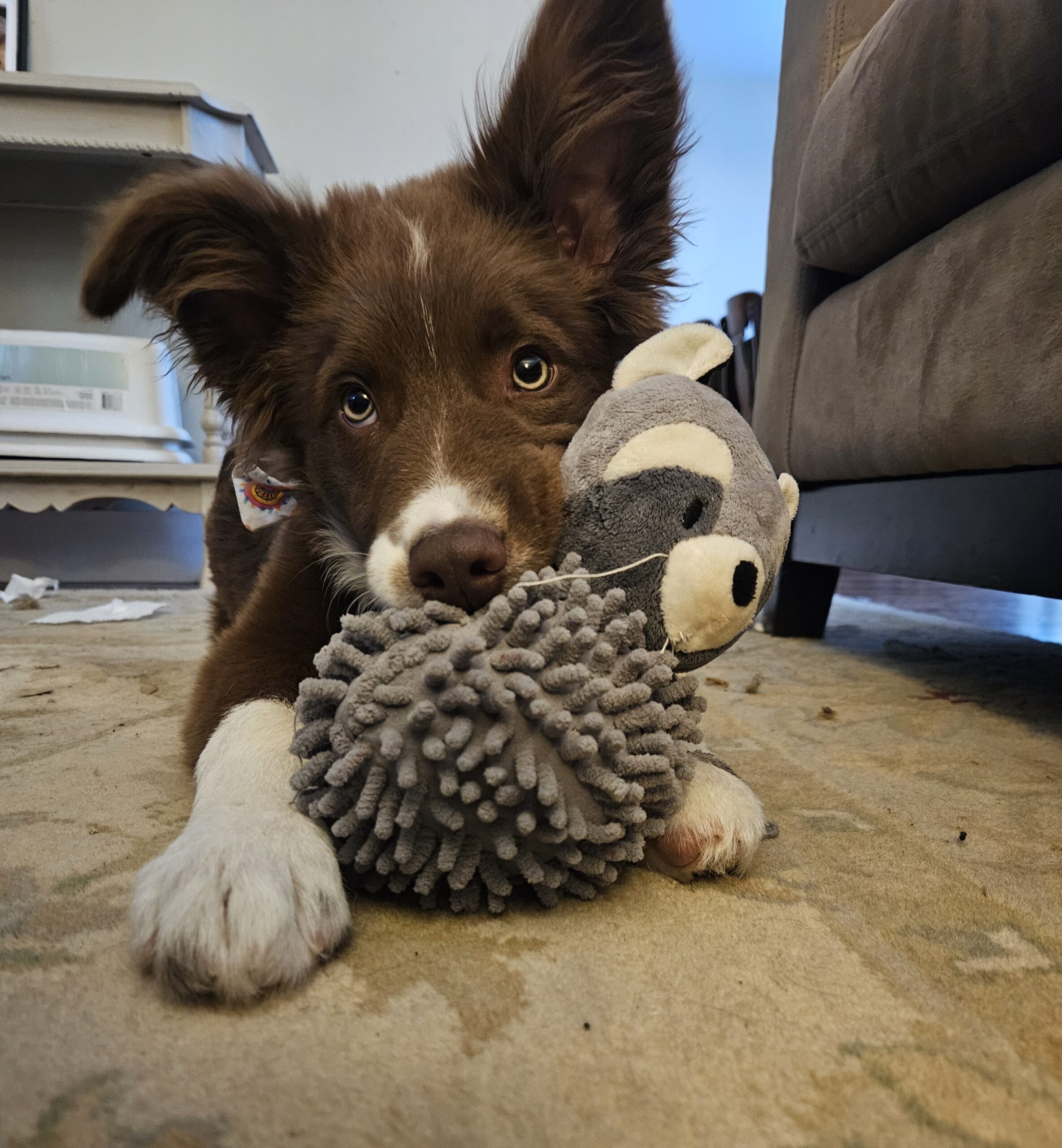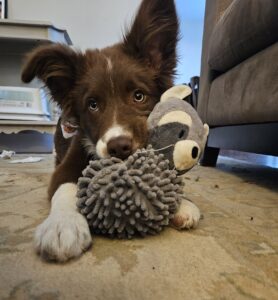It’s easy to assume that all challenging puppy behaviours are just a phase—but some signs shouldn’t be ignored. While chewing, nipping, jumping, and zooming around are part of normal development, certain behaviours in puppyhood can signal deeper fear, anxiety, behavioural pathology, or even underlying pain and medical issues. Oftentimes when puppies display these behaviours, well-meaning friends and family will tell you “don’t worry, he’ll grow out of it”. Unfortunately, puppies don’t simply “grow out of” these issues—in fact, without early support, these behavioural red flags often grow into more serious problems. Recognizing red flags early gives you the best chance to intervene in time and help your puppy grow into a confident, well-adjusted adult dog.
This topic hits close to home for me because one of my own dogs was a “problem child” and I missed the warning signs. Right from 9 weeks old, my youngest border collie, Hamish, was apprehensive of people and other dogs, had trouble settling, was very destructive, and was food-aggressive around my older dog. Unfortunately I assumed that these were all things I could simply train out of him by watching online videos or taking puppy classes, or that he’d grow out of in time. But I was wrong. In fact, what I was seeing were symptoms of underlying behavioural pathologies (anxiety disorders), later formally diagnosed by a board-certified vet behaviourist when Hamish was 8 months old. I waited until Hamish’s behaviour was almost unbearable to live with before reaching out to a vet behaviourist. Don’t make the same mistake I did, and assume things are normal or that your puppy will grow out of it.
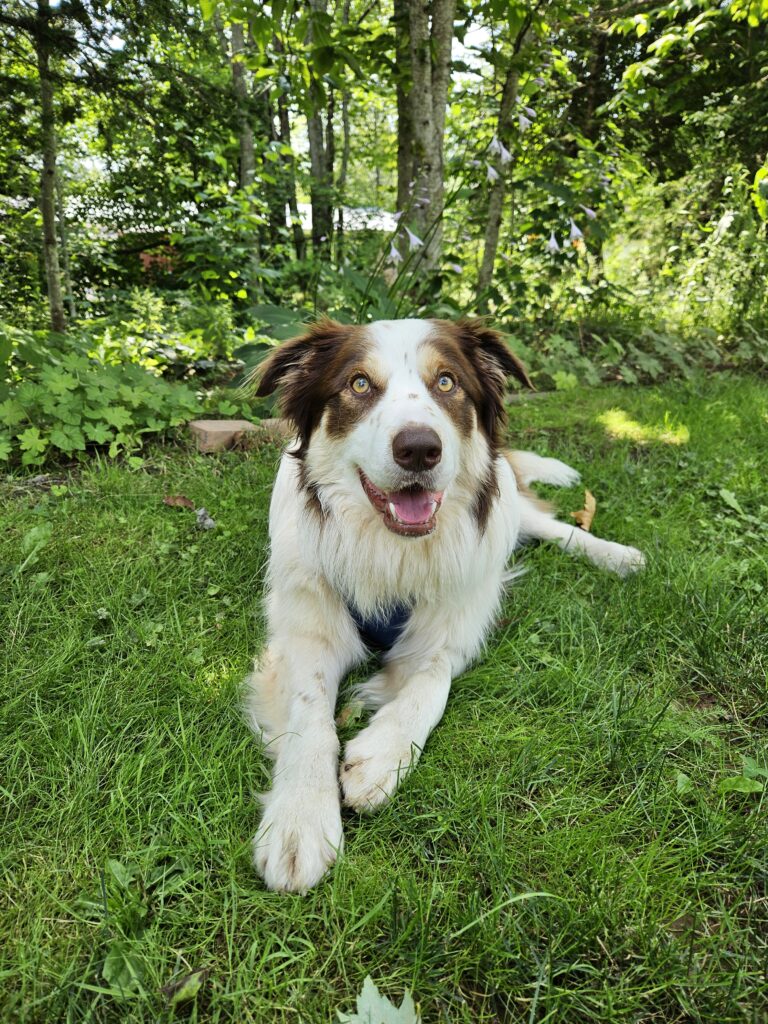
If you see any of the behaviours described below in your puppy, or if you feel like some of the behaviours you’re seeing in your puppy aren’t “normal”, trust your gut! Reach out to a qualified behaviour professional asap.
🚩 Behavioural Red Flags in Puppies
These behaviours go beyond normal puppy antics and may suggest an underlying issue:
- Persistent, intense fear reactions and lack of recovery after a scare
The puppy frequently freezes, withdraws, shakes, or tries to escape in response to everyday stimuli (e.g. new people, objects, sounds) and/or does not improve (or gets worse) over time even with gentle, positive exposure. For example: a puppy backs away and tries to escape when asked to enter the training classroom on the first day of puppy school, and in later weeks still does not want to enter despite being offered lots of treats, praise and toys during class time. Likewise, if your puppy remains distressed long (hours, days, weeks) after a startling event (e.g. a dropped object or loud noise) and struggles to return to normal behaviour, that is a red flag. Startling at sudden noises or stimuli is normal, but the puppy should be able to shake it off and recover. - Chronic hypervigilance or startling easily
Puppies who constantly scan the environment (inside or outside), have trouble relaxing even in familiar places, and/or startle at small or routine movements and sounds, are deeply worried about their environment. Hypervigilant puppies may seem “on edge” all the time—they might flinch when someone stands up, jump at distant noises, or freeze and stare at every passing movement. They often struggle to settle, even after play or exercise, and may seem more focused on monitoring their surroundings than interacting or resting. This is not the same as a puppy who curiously explores their environment or otherwise is interested in “checking things out”: hypervigilant puppies feel they need to monitor things at all times because they don’t feel safe or secure. - Extreme avoidance, fear, or dislike of being handled
The puppy consistently avoids being touched, restrained, or approached, even by familiar people, and may respond with panic, withdrawing, growling, or biting. Fear of handling may be a sign of underlying medical concerns causing pain or discomfort; it may also be a sign that a puppy has had poor early-life experiences (i.e. the puppy has learned to be fearful of being handled or approached by humans). Either way, aversions to everyday handling should be addressed immediately with the help of a behaviour professional. - Aggressive responses in non-threatening situations
Growling, snapping, or biting when there is no obvious threat or provocation, especially if these responses seem out of proportion for the context, are absolutely a red flag in puppies. Healthy puppies are curious, generally social and accepting, and willing to play with most humans and other dogs. Aggressive responses are abnormal in puppies but, like fear of being handled, are sometimes learned responses from negative early-life experiences. - Resource guarding or food aggression Young puppies who guard food or valuable items by freezing, growling, baring their teeth, lunging, or even biting are showing real concern about losing access to those resources. This behaviour can stem from early deprivation—such as limited access to food or high-stress conditions at the breeder’s—or from learning that valuable items are routinely taken away by humans or littermates. While it can be concerning to see in a young puppy, the good news is that resource guarding often responds very well to early intervention through thoughtful management and a positive training plan.
- Inability to settle or sleep
The puppy is always “on the go,” paces, or vocalizes excessively, even when tired or in a calm environment, and has difficulty resting or sleeping. Remember that puppies and adolescents (up to 2.5 years of age) need approximately 18 hours of sleep a day. Young puppies who refuse to settle and sleep, particularly at night, or are generally sleep deprived, should see a vet and a behaviour specialist as sleep is extremely important for puppy development. Pro tip: even young puppies can hold their bladders for up to 7 hours if they are sleeping deeply. Refrain from intentionally waking your puppy up at night for potty breaks- this will interrupt their sleep and prevent them from learning to hold their bladder overnight. - Lack of interest in social interaction
The puppy consistently avoids or ignores both people and other dogs, and seems shut down or unresponsive during typical social opportunities. This is often a sign of either illness, pain, or fear. Remember that healthy puppies are curious, optimistic, and generally social. Dogs and puppies will typically only play if they’re feeling safe, comfortable, and happy, so if your dog is not willing to play or engage with you, you will want to investigate. - Excessive or unexplained vocalization
Frequent barking, whining, or howling that occurs without clear triggers or is triggered by several different things (i.e. it feels like your puppy barks at everything) or continues even when the puppy’s needs are met, could be a sign of anxiety or fear. While some breeds are more vocal than others, frequent and persistent vocalization that feels out-of-control or disproportionate to the situation, should be discussed with a behaviour pro. - Separation-related distress: while it can be normal for puppies to whine a little in their crate before settling down, bigger, louder behaviours may indicate the puppy has a separation-related disorder (isolation distress or separation anxiety). Use a pet cam to observe and record your puppy’s behaviour when they’re left alone: watch for excessive vocalization; destruction; inability to settle; fast, excessive panting; or trying to break out of the crate or confinement area.
- Stereotypic or compulsive behaviours
Repetitive behaviours like spinning, tail chasing, fly snapping, or shadow chasing that seem difficult to interrupt or are done out of context, require professional intervention regardless of age. - Persistent house-soiling despite training efforts
Accidents continue well past the typical learning period, especially if paired with other signs of stress or anxiety, are often a sign of an underlying medical issue and/or chronic stress or anxiety. Generally speaking, a puppy should be fully housetrained by 6-9 months old. If you are thoughtfully managing the environment and putting effort into potty training, yet your puppy is still having frequent accidents, ask a professional for help.
How to Intervene
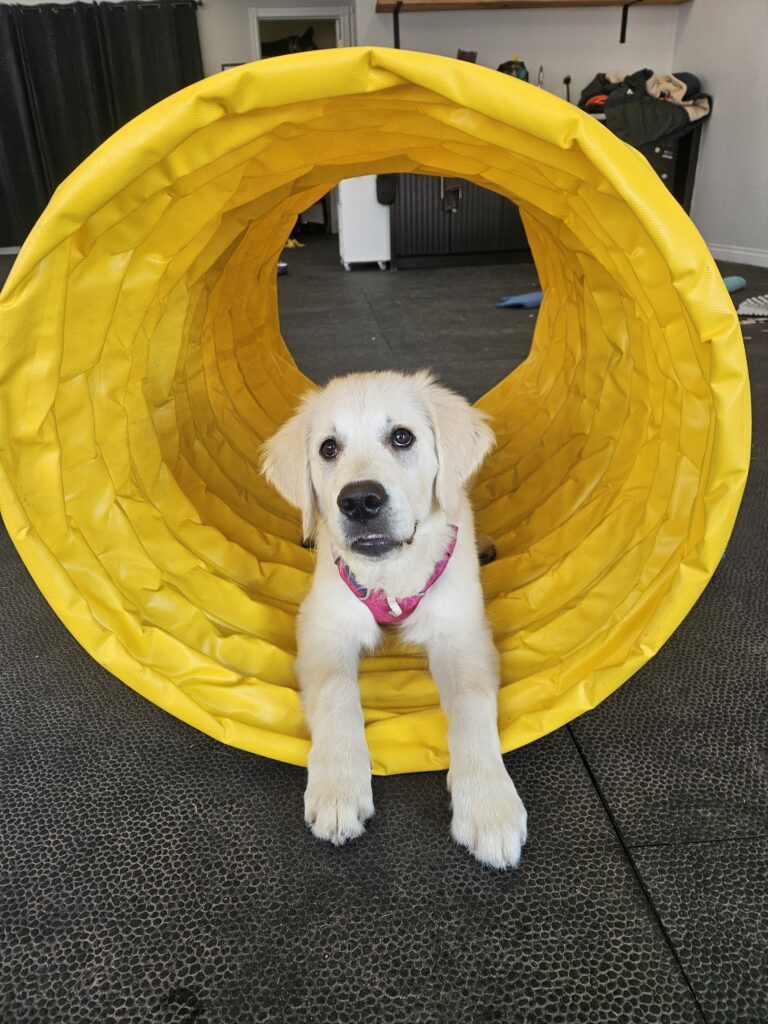
The best possible thing you can do if you notice any of the above behaviours, or if you are otherwise concerned about your puppy’s behaviour, is to contact a reputable certified trainer or board-certified vet behaviourist immediately. Do not DIY these issues– all behaviour concerns require the intervention, support, and watchful eye of a knowledgable, reputable behaviour professional.
Remember that early intervention is key! Puppies needing additional support do best when they receive that support as early as possible. Remember, puppies will not just “grow out of” fear, anxiety, aggression, or hyperactivity; in fact, these concerns tend to worsen over time. (Trust me, I know from my experience with Hamish!) Again, if you have concerns, reach out to a behaviour pro!
Another helpful tip is to focus on prevention: it is much better to proactively prevent fearful responses through desensitization and conditioning, that to reactively address them once they’ve started. One thing to note about fear and anxiety is that they generalize quickly, meaning that if your puppy has a pronounced fear response to something (e.g. another dog, stranger, or noise) they are likely to become fearful of other things as well- this is especially true of noise phobia. If you have a puppy, start working with a trainer either privately or in a well-run class setting, to prevent behaviour issues from developing or escalating. Positive, controlled socialization during puppyhood is key to preventing fearful responses!
Be aware of the puppy’s body language at all times. If you notice signs of stress, be your puppy’s advocate and help make the situation less scary: move them away from the scary stimulus and complete the stress cycle by doing a treat toss or engaging in a little play, then taking note of what scared the puppy (Stranger wearing a hat or sunglasses? Dog barking at them? Loud motorcycle going by?) Signs of stress or fear include:
- panting
- drooling
- withdrawing
- tense, stiff body langauge
- tucked tail or high, flagging tail
- weight shifted onto hind end
- lip licking
- yawning
- barking
- trembling
- flattened ears
- paw lift
- dilated pupils
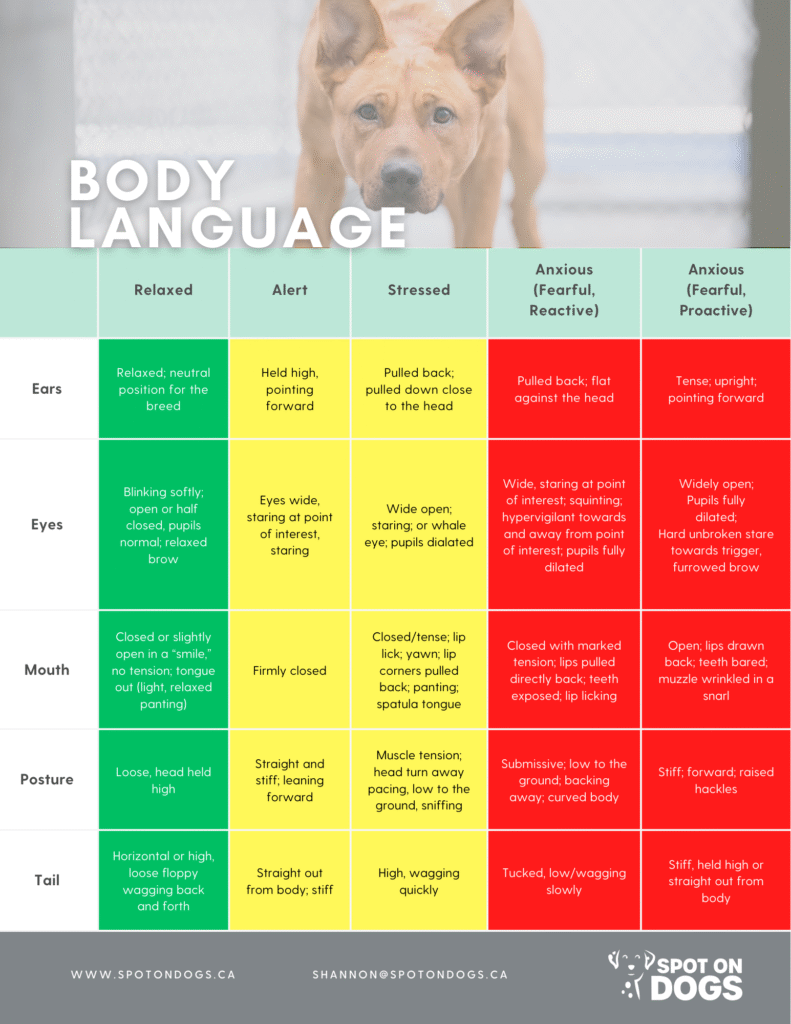
Conclusion
Raising a puppy is a lot of work, and even normal puppy behaviours can feel overwhelming . Reading your puppy’s body language and watching for behavioural red flags early gives you the best chance to intervene in time and help your puppy grow into a confident, happy, and comfortable adult dog.
Looking for help with your puppy? We’ve got you! Contact us – we’d be happy to help!
